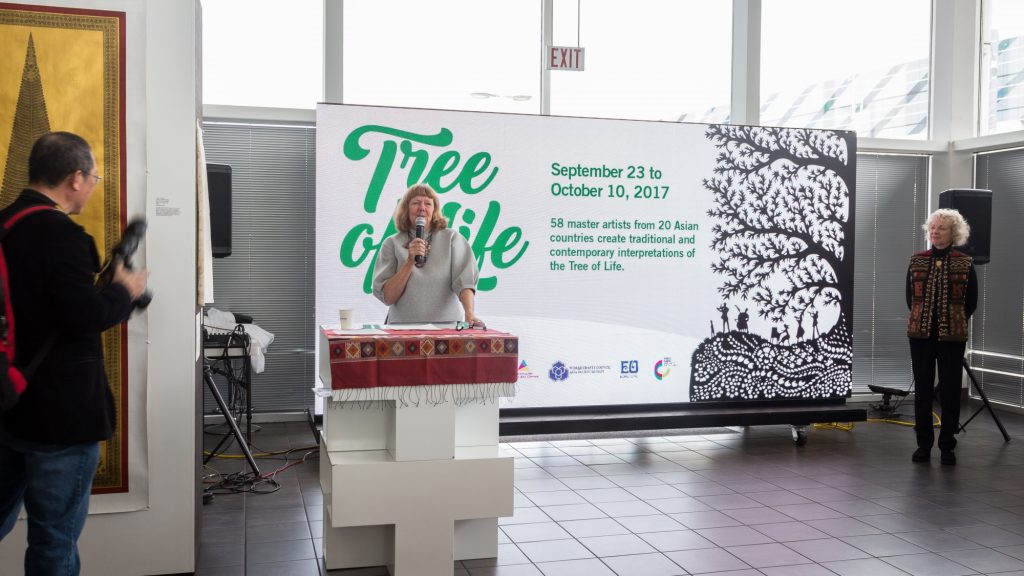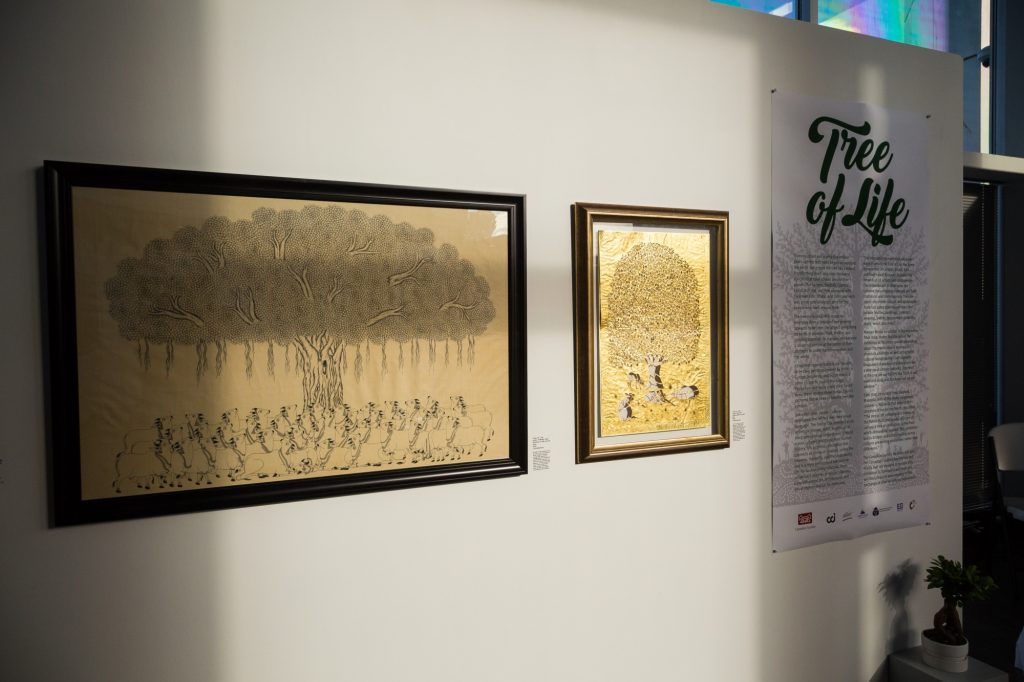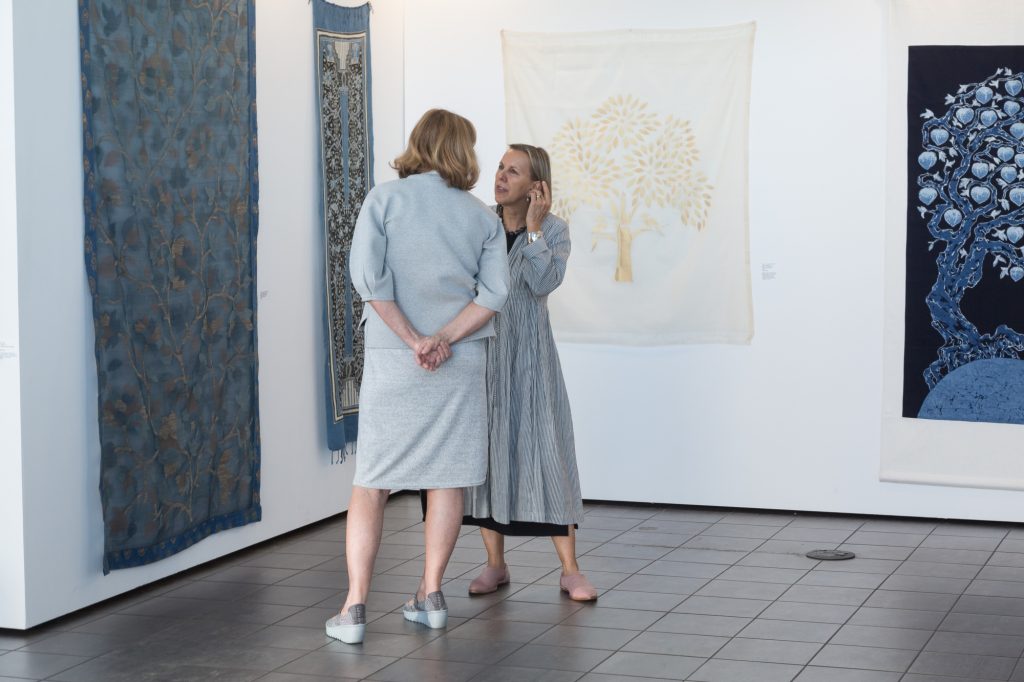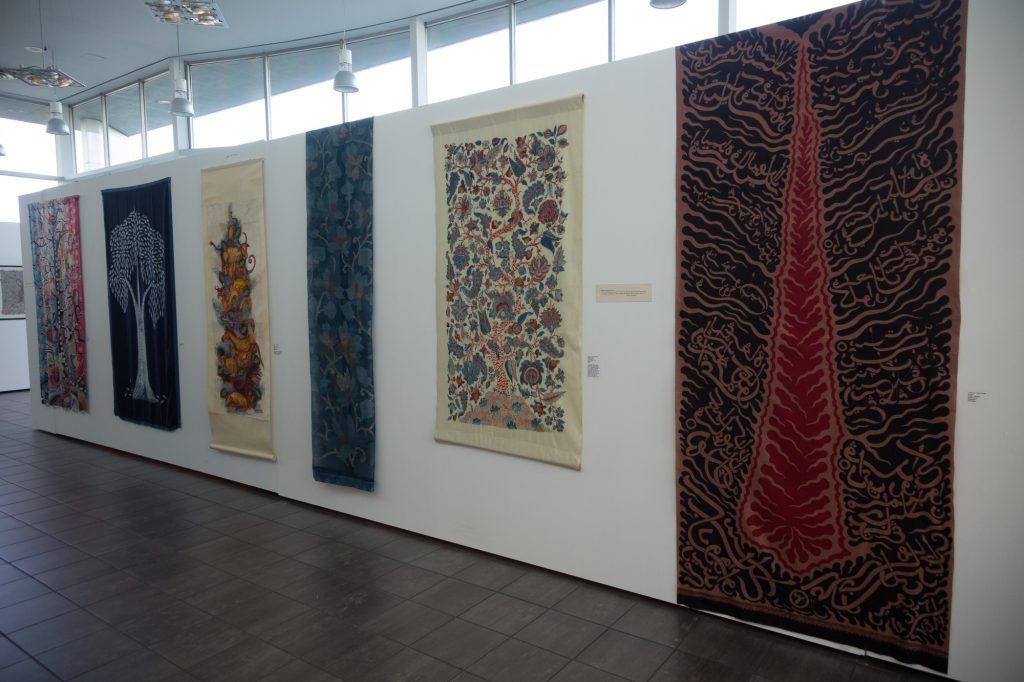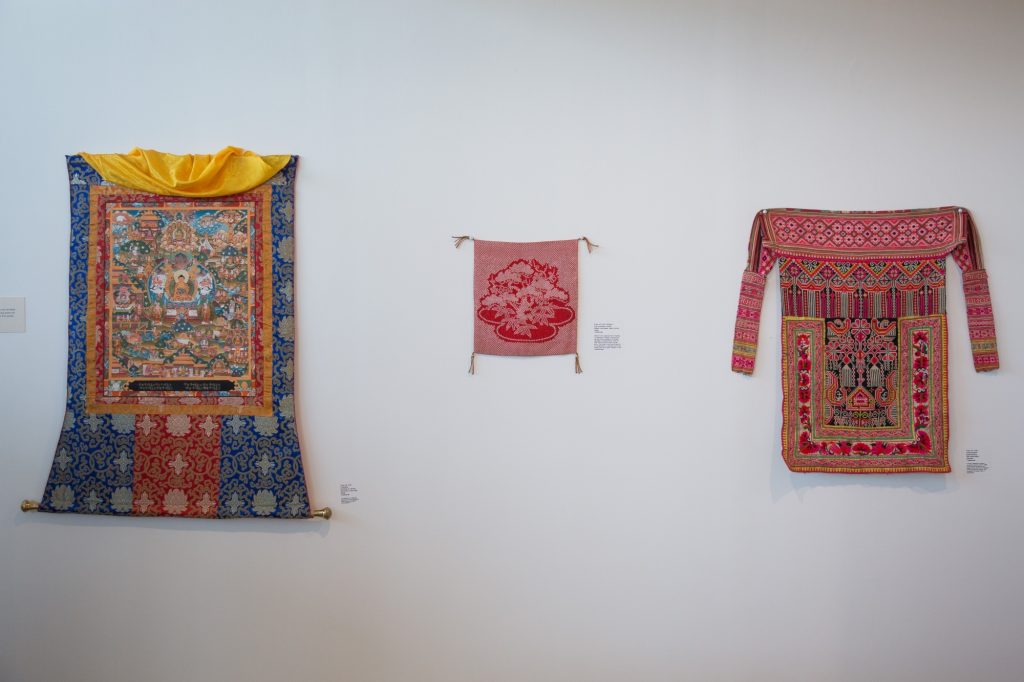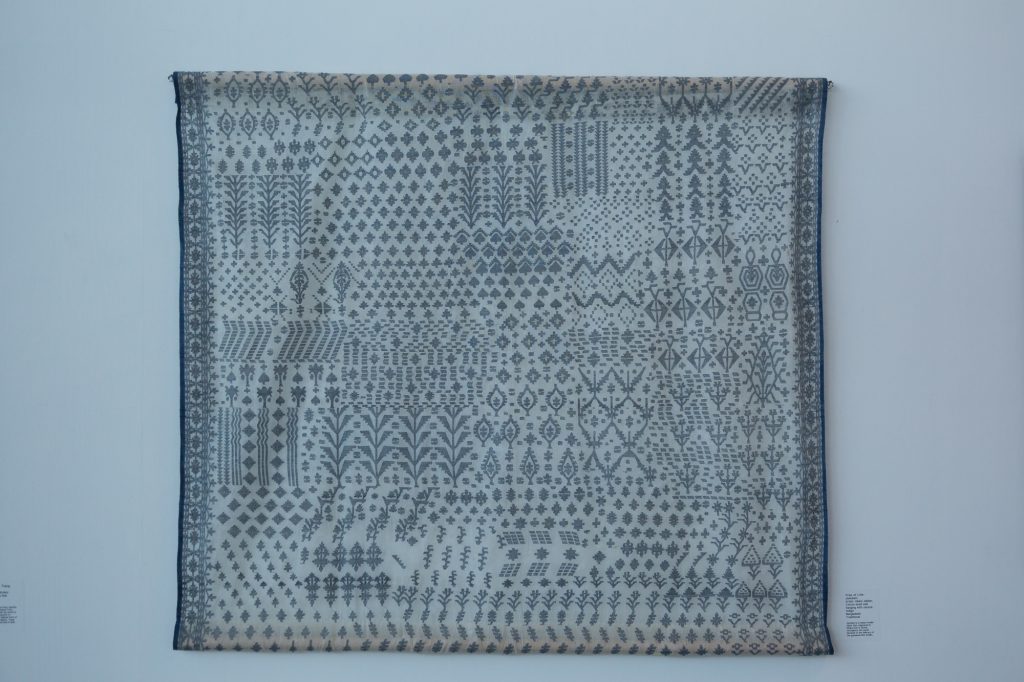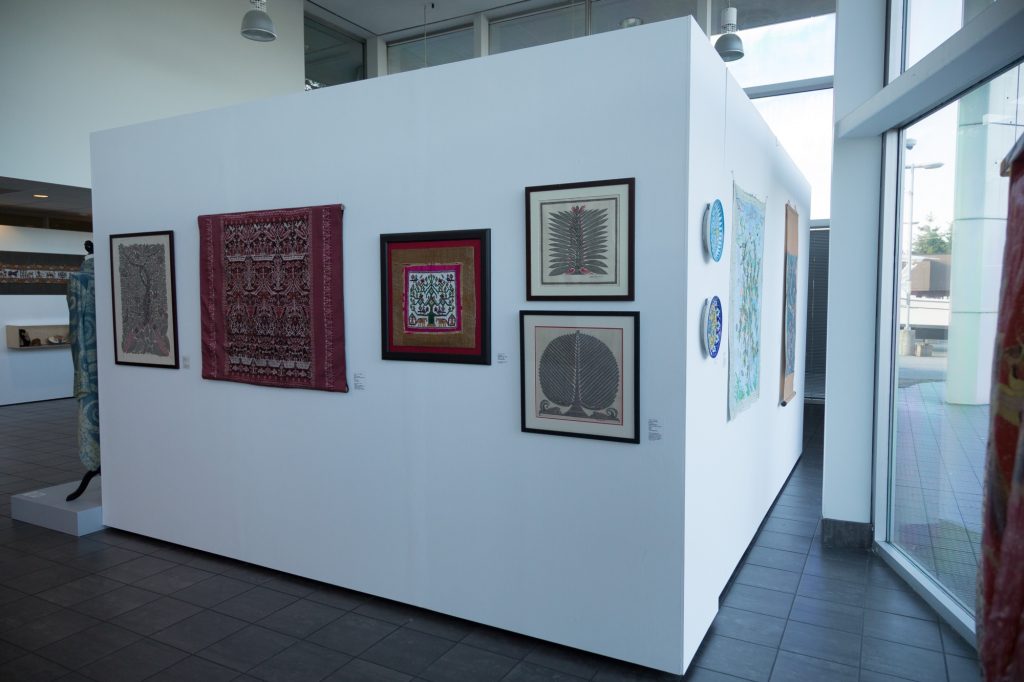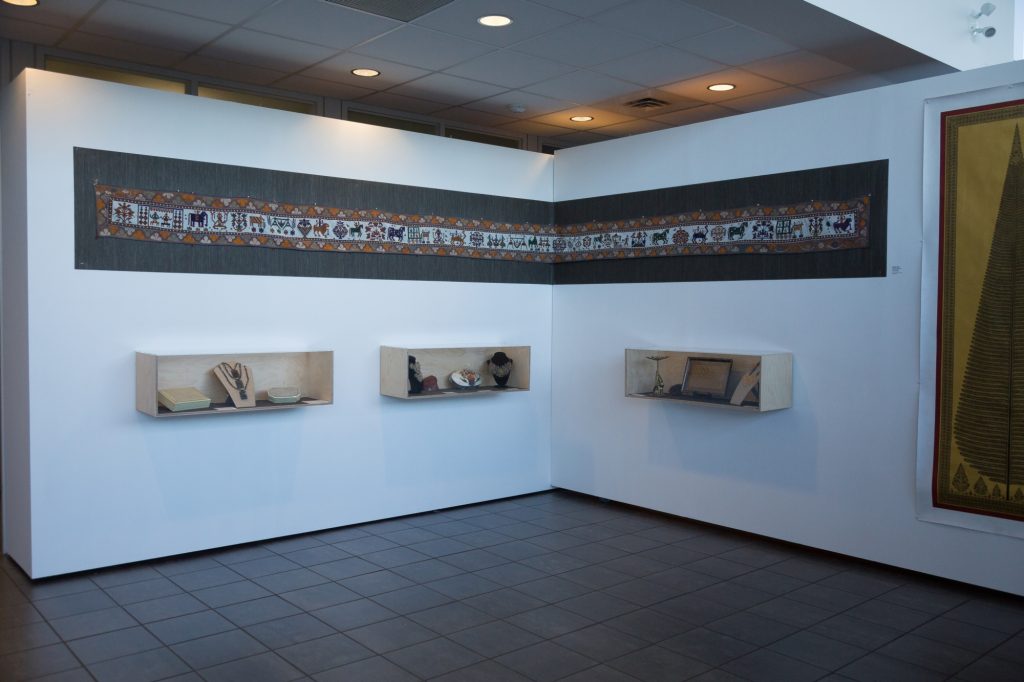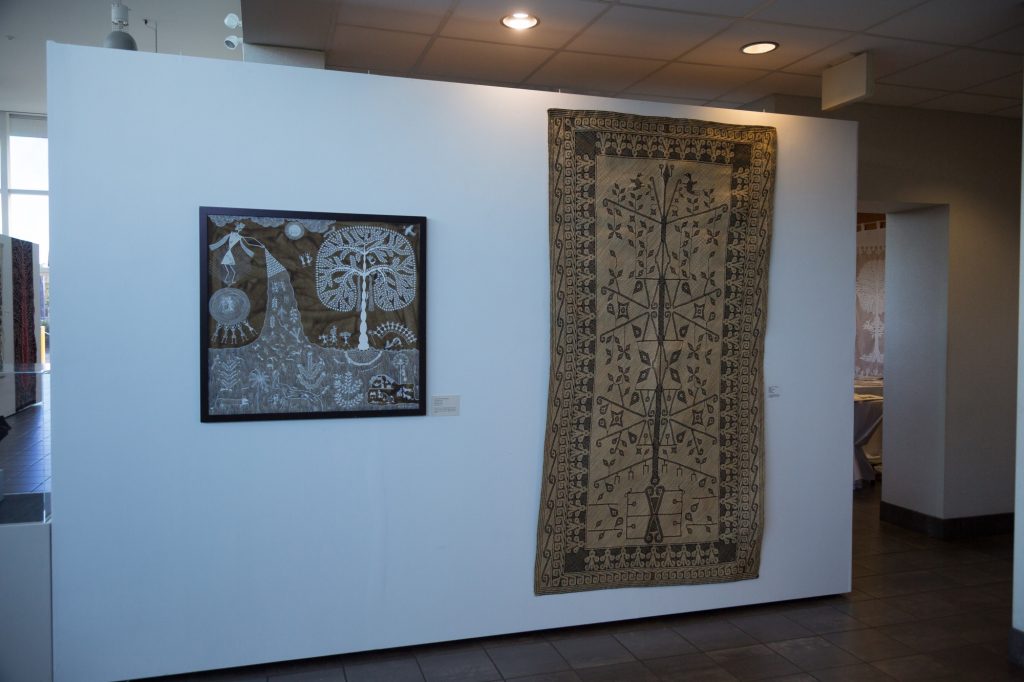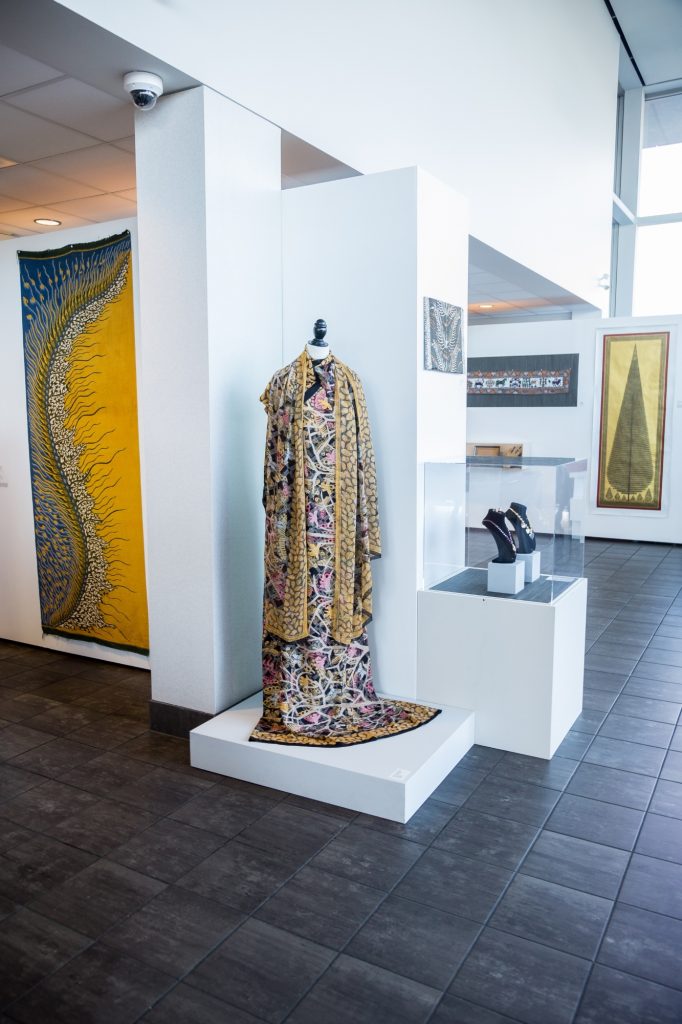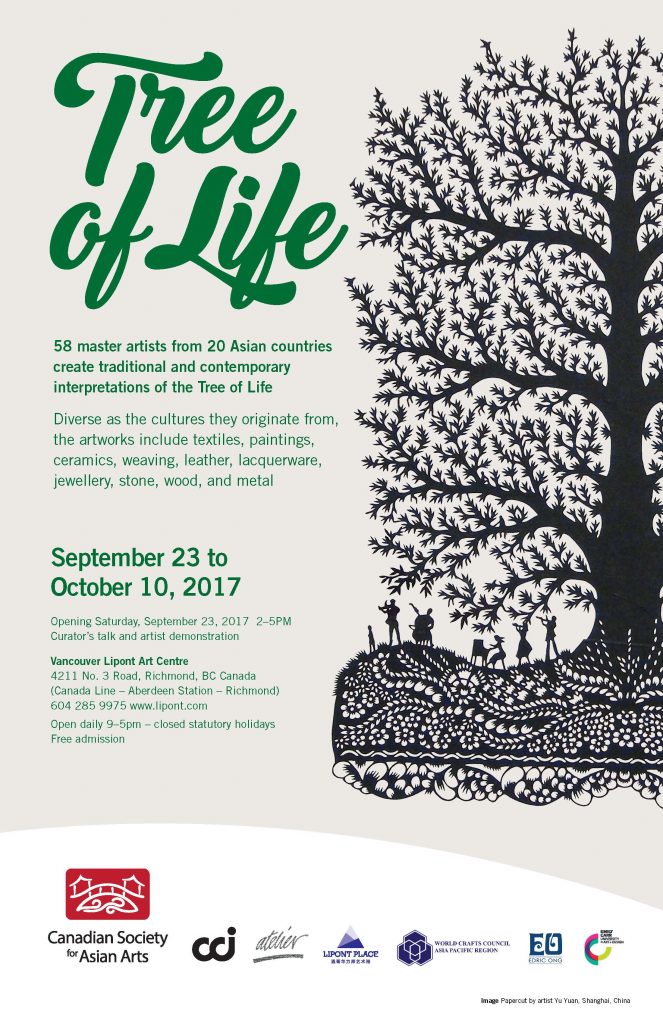
Tree of Life Exhibition
September 23 – October 10, 2022
Organized by Canadian Society for Asian Arts
Click here to read the catalog.
The Tree of Life is an archetype, theme, motif, image, spiritual concept and mythological story that is found across cultures and throughout human history. It is understood to connect all forms of creation and is a cosmic conception that embodies life’s mysteries, unites the heavens, the earth, and the underworld, and is seen as a representation of everlasting life. Its various interpretations from indigenous cultures and major religions have influenced art, architecture, and visual representation for millennia.
This international exhibition explores the ways in which the Tree of Life has been represented in 20 countries across Central, South, East, and South-east Asia and includes the artwork of 58 artists and craftspeople, many of whom are masters of their chosen form and some who are Living National Treasures* in their countries of origin. The artworks are as diverse as the cultures they originate from and are both traditional and contemporary. They are handcrafted from natural and sustainable materials, and include textiles, paintings, ceramics, weaving, leather, lacquer ware, jewellery, stone, wood, and metal.
*Living National Treasures are individuals certified as preservers of important, intangible, cultural properties.
Exhibition Information
The exhibition is presented in Vancouver by the Canadian Society for Asian Arts (CSAA) in cooperation with the World Crafts Council Asia Pacific Region, Crafts Council of India, and Society Atelier Sarawak. It is supported by the Province of British Columbia and the Aboriginal Gathering Place, Emily Carr University of Art and Design. The exhibition has been displayed at the East-West Centre in Honolulu, and in Kuala Lumpur, Sarawak and Delhi, India. It travels on to the National Taiwan Craft Research Institute in Nantong.
The exhibition was conceived by co-curators Manjari Nirula of India and Edric Ong of Malaysia. The Canadian curators are Sheila Hall, a Director of the Canadian Society for Asian Arts, and Ray Hartley.
Manjari Nirula states that the aim is “to create greater awareness about the importance of ecology and its connection to our lives, to stimulate creativity and highlight cultural sustainability. The roots of the tree are our beliefs, the trunk is our mind and body, and the branches are our wisdom.”
Edric Ong tells of the many indigenous cultures in Malaysia that address the concepts of the sacred forest. He states, “The tree of life in Malaysia is known as the Puhon Budi and speaks of a tree of culture, a tree of civilization, a tree from which all mankind evolved. This exhibition builds bridges and brings healing across cultures presenting similarities rather than difference.”
Location: Lipont Place
Exhibition dates: September 23 – October 10, 2017 (Closed Oct. 9 for Thanksgiving)
Opening Reception: Saturday September 23, 2017, 2:00 – 5:00pm
Curator’s talk by Edric Ong and artist demonstrations by painter Jai Prakash; jeweller Deepak Sankit and paper cutter Ram Soni.
Family Program: Saturday, September 30, 2017, 2:00 – 5:00pm
Woodblock printmaking, Bodhi tree wishes, artist demonstrations; free
The Canadian Society for Asian Arts (CSAA) was founded in 1969 as a non-profit multicultural organization by a diverse group of scholars, collectors and other individuals who shared an interest in and a devotion to Asian arts and cultures. The CSAA is uniquely pan-Asian in its mission, its program focus, its membership, and it’s governing Board. The purpose of the Society is to promote the appreciation and understanding of the arts of Asia by bringing quality programs, exhibitions and publications to interested groups and individuals in Canada and by exploring links among the cultures of Asia.
https://www.facebook.com/Canadian-Society-for-Asian-Arts-112661175963/


